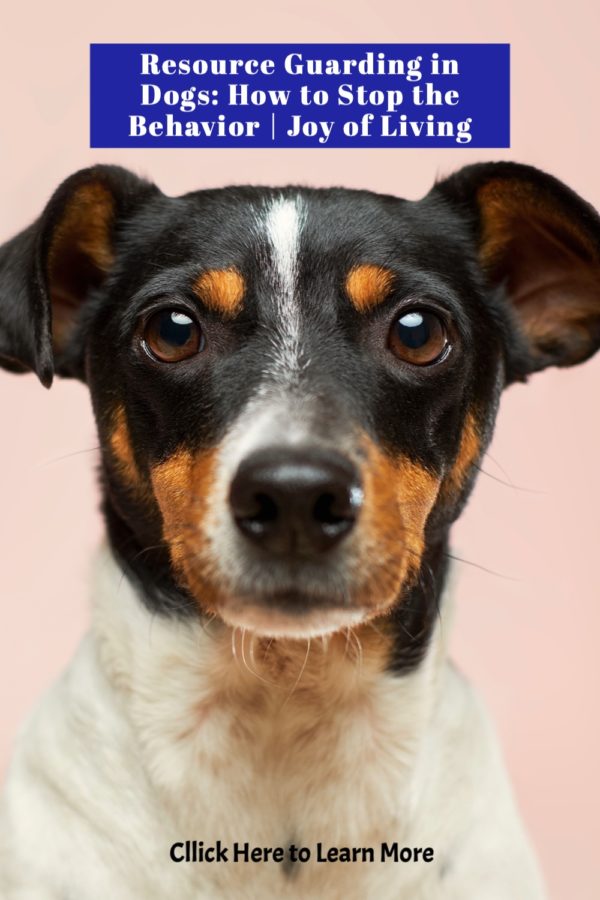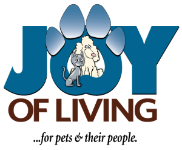Resource Guarding in Dogs: How to Stop the Behavior
Posted on August 4, 2020 by Joy of Living No comments

Usually, my dog J.R. is pretty easy going, with one exception. The presence of a Himalayan Chew Stick. J.R. would work on one of those for hours, but one day he set it down and I started to pick it up. He growled at me! Resource guarding has not been a problem before, this told me how important the chew was to J.R.
Disclosure: This post contains affiliate links. We receive a small commission on goods purchased via these links, at no additional cost to you.
Signs of Resource Guarding
Resource guarding isn’t only about food, it’s anything that’s important to your dog. It might be a favorite toy, a bone, or even a rock!
If you move toward the object, your dog will think you’re trying to take something valuable from him, and will growl as a warning not to proceed. Failing to acknowledge the growl and continue will often lead to biting.
When food is the source of the resource guarding, watch for your dog lowering his head closer to his food bowl, or he notice he’s eating food faster. These are both signs of food resource guarding.
Training To Stop Guarding Behavior
Guarding Food Bowl
Once you’ve determined your dog has resource guarding issues, it’s time to start training to curb the behavior.
Start training with an empty bowl. Add a handful or spoonful (if he eats moist food) of food, then move away from his bowl. After he’s eaten that portion, add another portion of food to his bowl, allow him to eat. Continue this until he’s finished his entire meal.
Continue this for every meal for two weeks. Once your dog sees your movement toward his bowl means more food, he should welcome your presence by his bowl and stop the guarding.
Object Guarding
When an object such as a favorite toy, is the object of resource guarding, put the object away out of sight for a couple of weeks.
Begin training with an object your dog doesn’t guard, say another toy. Offer the dog this alternate toy and ask him to bring it back to you. Each time he does so, give him a treat. Once he has mastered the exercise with one toy, get another object he’s not likely to guard and begin the same process with the second object. Do this same exercise several more times (as many as 12 times) of other objects not likely to be guarded, making the treat reward a little more valuable with each new object cycle.
After a dozen successful cycles, reintroduce the original toy that your dog guarded. Make it one of the objects, but not the only one, in the game. By introducing many toys, he’ll come to see them as equal in value, and instead focus on the fact the return game has a great reward payoff!
Guarding From Other Dogs
When food is the issue between dogs, a short term fis is feeding them in separate locations. For toy related guarding, remove the toy from the equation. In both cases, the objective is showing your dog that having other dogs around is a good thing and he’ll stop guarding.
Let’s focus on food guarding between dogs. Begin by bringing the dogs to the same general area, cue them both to sit, but don’t let them get too close together. Place them only as close as the guarding dog feels comfortable. Give the second dog a treat, then the guarding dog a treat. When both dogs are still calm, continue the treat exercise. Gradually bring the dogs closer with each successful completion of the treat cycle. Watch for signs of discomfort in the guarding dog. Stop the exercise if you see signs of discomfort in the guarding dog.
Continue the exercise for 1-2 weeks, and your guarding dog will gradually come to realize having the other dog around is a good thing, and leads to yummy treats!
Resource guarding can be scary. Patience, time and training your dog will Increases his confidence that all is well and stop the behavior.
Source: Modern Dog Magazine, Spring 2020
